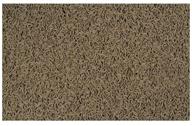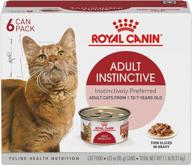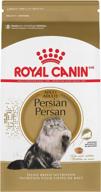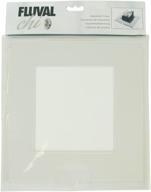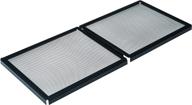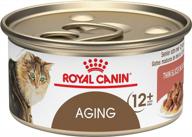Keeping Your Reptile Happy & Healthy With the Right Terrarium Cover
Having the proper terrarium cover is essential for maintaining your reptile's health and happiness. The right cover allows for proper temperature regulation, humidity control, ventilation, and lighting within the enclosure. Considering key factors like material, fit, and accessories will help you provide your reptile with a safe and comfortable home.
Another interesting products
Choosing Cover Material
Terrarium covers come in a variety of materials, each with their own benefits:
- Glass - retains heat and humidity well, allows UVB light for reptiles that need it
- Wire mesh - excellent ventilation, lets heat and humidity escape
- Wood - aesthetically pleasing, insulates temperature, heavier than other materials
- Acrylic - lightweight but durable, some UVB light penetration
Consider your reptile's needs when selecting a material. For example, a tropical gecko would do best with an acrylic or glass cover to hold in heat and moisture. Meanwhile, a desert dwelling bearded dragon needs a wire mesh top for maximum airflow.
Finding the Right Fit
An ill-fitting cover can cause issues like:
- Escaped pets
- Temperature and humidity fluctuations
- External pests or predators entering the enclosure
When shopping for a terrarium cover, measure your tank carefully to get an exact fit. Look for covers with lockable doors or secure latches to prevent escapes. For mesh tops, ensure the gaps are small enough to keep insects out.
| Cover Type | Good Fit Indicators |
|---|---|
| Glass | Rests flush with tank edges, no large gaps |
| Wire mesh | Mesh holes smaller than reptile's head |
| Wood | No visible light coming through cracks |
Ventilation & Accessories
Proper ventilation keeps fresh air circulating and prevents the buildup of odor and humidity. Mesh tops offer the most ventilation, while solid covers need extra air holes. Some useful accessories include:
- Cutaway sections for heat lamps
- Hinged doors for easy access
- Hygrometer/thermometer gauges to monitor enclosure
- Locks and latches to secure the cover
Added features like these help customize your terrarium cover for optimal function. Keep a close eye on temperature and humidity levels, and make adjustments as needed to maintain your reptile's health.
Having the right terrarium cover is just one aspect of responsible reptile care. Be sure to also choose an appropriate substrate, provide proper lighting and heating, feed a healthy diet, and give your pet ample space to thrive. Take the time to select the ideal cover and accessories, and your reptile friend will enjoy the benefits for years to come.
Choosing the Right Terrarium Cover Material
Selecting the right material for a terrarium cover is crucial for maintaining proper conditions for your reptile or amphibian. Factors like temperature regulation, humidity control, ventilation, durability, and aesthetics should guide your decision when shopping for a cover.
Key Functions of Terrarium Covers
Terrarium covers serve several important purposes:
- Retaining heat and humidity
- Allowing UVB light penetration
- Providing adequate ventilation
- Keeping out pests and insects
- Preventing pets from escaping
The ideal material will help you achieve the right balance of these elements for your particular species' needs.
Common Terrarium Cover Materials
Here are some popular options to consider:
Glass
Glass tops retain heat and humidity very effectively. They also allow UVB rays to pass through, which some reptiles need for proper calcium metabolism. On the downside, glass is prone to shattering if dropped and lacks ventilation. It also shows water spots and dirt easily.
Wire Mesh
Mesh covers made from aluminum or steel wire optimize air circulation. This makes them a top choice for desert-dwelling reptiles that need a dry, ventilated environment. Mesh allows some UVB light through but not as much as glass. It can also be sharp or injure reptile's noses when trying to climb.
Wood
Wood terrarium covers complement naturalistic vivarium designs. Wood insulates temperature reasonably well but is not as effective at retaining humidity. Look for a durable hardwood cover without knots, splinters, or cracks. Avoid treated wood, as the chemicals could leach into the enclosure.
Acrylic
Acrylic covers are lightweight, transparent, and long-lasting. Acrylic transmits some UVB rays and resists impact better than glass. However, it can scratch easily, develop static charge, and will degrade over time in extreme heat or sunlight. Still, acrylic is an excellent glass alternative.
Key Considerations By Species
Here are some examples of choosing materials based on common pet reptile needs:
Chameleons
Chameleons thrive in warm, tropical settings. A glass canopy helps maintain the needed humidity while allowing UVB access. Leave part of the top screened for airflow.
Leopard Geckos
These desert-adapted geckos require lower humidity and cooler temperatures. A wire mesh top works well to create their preferred dry environment.
Green Tree Frogs
These amphibians need very humid, tropical conditions. Opt for an acrylic cover to retain moisture. Make sure the enclosure also has adequate ventilation.
Bearded Dragons
Bearded dragons bask in bright light and moderate temperatures. Use a combination wire mesh/acrylic cover. This allows UVB transmission while still permitting air circulation.
Top products in 🏞️ Terrarium Covers
Customization Options
Many covers allow customization for specialized needs:
- Cutouts - open space for heat lamps or live plants
- Hinges - doors that provide easy access to the enclosure
- Locks - prevent escape-prone reptiles from lifting the cover
- Hygrometers - built-in gauges to monitor conditions
Think about convenience features to make your terrarium setup complete. The most important factor is still matching your pet's natural habitat as closely as possible.
With some research and planning, you can select the perfect terrarium cover material for your reptile or amphibian's needs. Combining the right elements of temperature regulation, humidity control, light transmission, and ventilation will keep your terrarium inhabitant healthy for years to come.
Finding the Perfect Fit for Your Terrarium
A properly fitted terrarium cover is crucial for maintaining ideal environmental conditions for reptiles and amphibians. Take time to measure and select a cover that seals tightly to the tank for maximum security and climate control.
Similar products
Dangers of Poor Fitting Covers
Ill-fitting tops lead to problems like:
- Lost humidity from gaps, causing dehydration
- Difficulty regulating temperature as heat escapes
- Pet injuries or escapes through wide openings
- Pests like crickets sneaking into the enclosure
Measuring Your Tank
To find an accurate fitting lid:
- Use a tape measure to determine the exact length and width of the tank.
- Note the dimensions of any protruding filters or other accessories.
- Check for rim thickness by measuring from tank bottom to the outer edge of the rim.
Having precise measurements will help you select a cover that aligns flush with the terrarium edges.
Allowing Room to Grow
For juvenile reptiles, factor in future growth when shopping for a cover. Purchase a larger size to accommodate your pet as it matures and avoid buying new covers.
Indicators of Proper Fit
A well-fitted cover should:
- Completely cover the tank with minimal gaps
- Rest flat on the rim without wobbling
- Have doors or panels that close securely
- Allow proper access to heat lamps and other fixtures
Test fit the cover before purchasing when possible. This will confirm it seals the terrarium so you can maintain the ideal microclimate.
Customization
For unique tank shapes, a custom glass or plexiglass cover may be needed. Work with a specialty manufacturer to get a one-of-a-kind lid.
With careful measurement and selection, you’ll find the perfect terrarium cover fit. Your reptile or amphibian will enjoy a safe, secure, and climate-controlled home.
Allowing Proper Ventilation While Maintaining Heat & Humidity
Reptiles and amphibians need enclosures with the right balance of ventilation and climate control. Careful terrarium cover selection and accessory use can help maintain temperatures and humidity levels while still permitting air exchange.
Benefits of Good Ventilation
Allowing airflow in the terrarium provides:
- Fresh, oxygenated air
- Removal of waste gases like CO2
- Prevention of excess humidity buildup
- Cooling effect during hot weather
Proper ventilation helps keep terrarium inhabitants healthy.
Strategies for Reptiles & Amphibians
Use these approaches to balance ventilation with heat and humidity needs:
Rainforest Species
Tropical reptiles like chameleons need high humidity but also some airflow. Use plexiglass or glass covers with screen cutouts to retain moisture while permitting ventilation.
Desert Species
Lizards like bearded dragons require dry, well-ventilated desert conditions. Wire mesh tops work well to maximize airflow for these pets.
Aquatic & Semi-Aquatic Species
For amphibians, leave portions of the tank uncovered or use mesh lids. This prevents excess condensation while still allowing heat and humidity retention.
Helpful Accessories
Use accessories to optimize ventilation:
- Hygrometers - monitor humidity levels
- Thermometers - track temperatures
- Misters - increase humidity when needed
- Fans - improve airflow if too stagnant
Make adjustments based on gauges to maintain ideal conditions.
Warning Signs
Watch for these signs of insufficient ventilation:
- Condensation dripping from cover
- Mold or mildew growth
- Excessive animal shedding
- Labored breathing or lethargy
Open vents, use a fan, or replace the cover with a well-ventilated option if air exchange seems inadequate.
With close monitoring and the right mix of covers and accessories, you can successfully provide proper ventilation along with the needed temperature and humidity levels.
How to Use Amazon Prime to Buy Terrarium Covers
Owning reptiles or amphibians means providing them with a comfortable, climate-controlled habitat. A well-fitted terrarium cover is crucial for maintaining the right environment inside your pet's enclosure. As an Amazon Prime member, you can use your subscription benefits to conveniently purchase terrarium covers and accessories.
Search for Terrarium Covers
Amazon's massive inventory makes it a go-to source for terrarium supplies. Search for "terrarium covers" and filter by material, size, brand, and other features. View product photos and read reviews to evaluate options. Consider glass, wire mesh, acrylic, and wood covers to accommodate different species' needs.
Select Based on Your Pet's Needs
Choose a cover that fits your terrarium dimensions and matches your reptile or amphibian's natural habitat. For tropical species requiring more humidity, glass or acrylic tops are ideal. Reptiles needing ample ventilation do best with wire mesh covers. Make sure to allow proper lighting penetration as well.
Compare Prices & Shipping Options
See at a glance how much covers cost from various sellers. As a Prime member, you qualify for FREE Two-Day Shipping on most items. This provides quick delivery so you can get your terrarium set up faster. You also have access to Prime FREE One-Day Shipping in some areas.
Select Additional Accessories
Choose any other supplies needed to complete your terrarium habitat like lighting, heating elements, hygrometers, and thermometers. Add useful cover accessories like hinges, locking mechanisms, and cutaways for fixtures. Place all items in one cart for simplified ordering.
Checkout with Prime Benefits
At checkout, your Prime membership earns you free shipping and automatic savings. There's no minimum order size to qualify. You can also choose convenient delivery dates to ensure someone is home to receive the packages.
Enjoy Fast, Free Delivery
Now relax while Amazon handles fulfilling and shipping your order. With Prime speed, your terrarium cover and accessories will arrive in just a day or two. You'll be able to set up a healthy habitat faster for your beloved reptile or amphibian.
Providing for a pet's specialized needs can mean sourcing supplies from niche places. But Amazon's massive selection and Prime perks make it easy to find and receive quality terrarium covers right when you need them.
10 Popular Outlines For Terrarium Covers Products Without Numerations Qui
- Protect your reptiles and amphibians with high-quality terrarium covers.
- Choose from a variety of materials, including glass tops, inserts, and screen lids.
- Keep your pets safe from escaping and predators with secure locks and hinges.
- Ensure proper ventilation and prevent overheating with our terrarium covers.
- Find the perfect size and style to fit your reptile or amphibian enclosure.
- Shop for unique and custom handmade terrarium covers on Etsy.
- Save money and live better with pet supplies terrarium covers from Walmart.
- Discover the top brands of terrarium covers, including Zilla and Exo Terra.
- Replace your reptile terrarium screen cover with Exo Terra's high-quality replacement part.
- Create a bioactive terrarium enclosure with NEHERP's accessories, including terrarium covers.
Popular Outlines For Terrarium Covers Products Amazon
- Discover the best Terrarium Covers in Amazon's Best Sellers list for Pet Supplies.
- Shop for a wide selection of Terrarium Covers for Reptiles & Amphibians on Amazon.
- Find the perfect size and style of Terrarium Cover for your pet's enclosure.
- Choose from a variety of materials, including glass tops, inserts, and screen lids.
- Ensure proper ventilation and prevent overheating with high-quality Terrarium Covers.
- Get added security with non-locking screen clips for your Terrarium Cover.
- Save money with new and future releases in Reptile Terrariums on Amazon.





